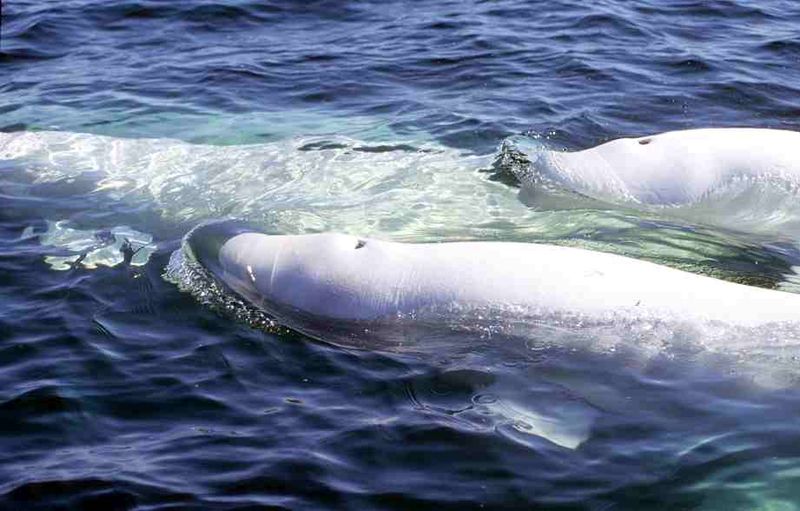
Photo credit: Ansgar Walk
What better way to start February than with a post about the beluga whale? Here we are in the midst of winter and have the chance to learn about the white whale living in the Arctic where it feels like winter all year.
Belugas or Delphinapterus leucas belong to the unique family Monodon monoceros, that also includes the narwhals. On average, belugas weigh approximately 3,300 pounds as adults and grow up to 11 to 18 feet in length. Males tend to be larger than females and have a more hefty build, but overall look the same. When belugas are first born, they are a gray-cream color which turns to a darker blue-gray. As they get older this color becomes lighter and lighter until they eventually become pure white at the age of 14 and 18 for females and males respectively.
According to the Encyclopedia of Marine Mammals, scientists originally thought that belugas lived about 40 years, but new studies indicate that they live much longer. Get this, to figure out the age of belugas, scientists detected the levels of radioisotope 14C (supposed to be a very small 14 in front of the C) in belugas’ teeth. Apparently, the levels of this radioisotope in the marine environment increased dramatically thanks to nuclear bomb testing in the late 1950s.
Another bizarre twist to pollution in the environment, first it was sea otters using bottles to crack open sea urchins, now it’s radioisotopes in belugas’ teeth deciphering their true age. Go figure. But let’s just be clear, pollution is still bad and nuclear bombs are very, very bad.
Anyway, by “using this increase as a reference point they determined that beluga whales most likely lay down only one growth layer group a year, rather than two.” And just a refresher for those of you who missed the post on figuring out the age of marine mammals, many marine mammals have growth layers in their teeth, similar to the growth rings found within a tree, allowing researchers to determine age. So once scientists found that belugas had only one growth layer per year instead of two, they realized that the age estimate needed to double from 40 to 80 years!
So there you have it, beluga whales can compete with humans when it comes to lifespan statistics. Look for more on belugas in the next post, there is so much more to tell!
Leave a Reply